What Insects Could be Living in your Grain?
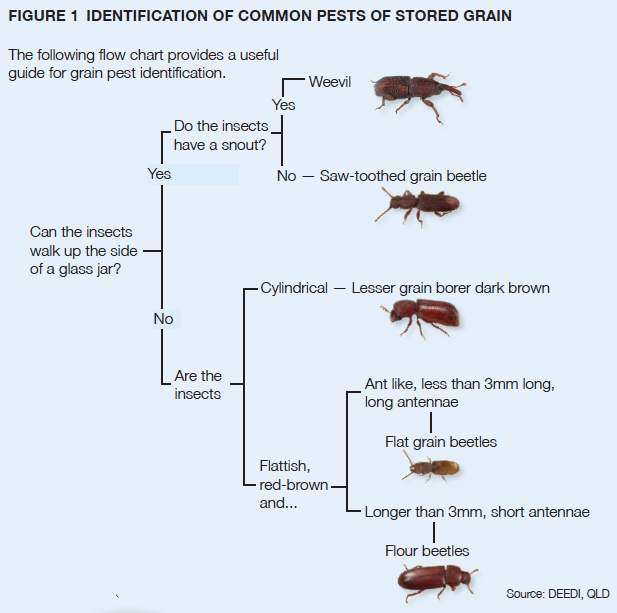
Welcome back for another instalment of Steve, The Silologist.
With harvest in full swing for some and coming to a closure for others; I thought it was best to keep the conversation going.
Last time we covered the importance of fumigation, this time I’m taking it a step further to look at what are we fumigating for?
There are 5 main pests to be on the lookout for, all of which have different characteristics and will damage your produce in different ways. Regardless, all of them create damage to your stored goods and derail your return on investment. The ability to identify insects before a serious infestation takes place can save your grain. A sample taken from both the top and bottom of your storage is one of the easiest means of early detection. Using an insect sieve, place it in the sunlight to encourage insect movement. This method won’t take long to do and is (if done often enough) a great means of detection. It is also important to analyse the appearance of your grain from the lid, if you notice any grain sticking to the walls of your silo or damage to the grain itself, you have an infestation.
Now, let’s talk about the different types of pests to look out for.
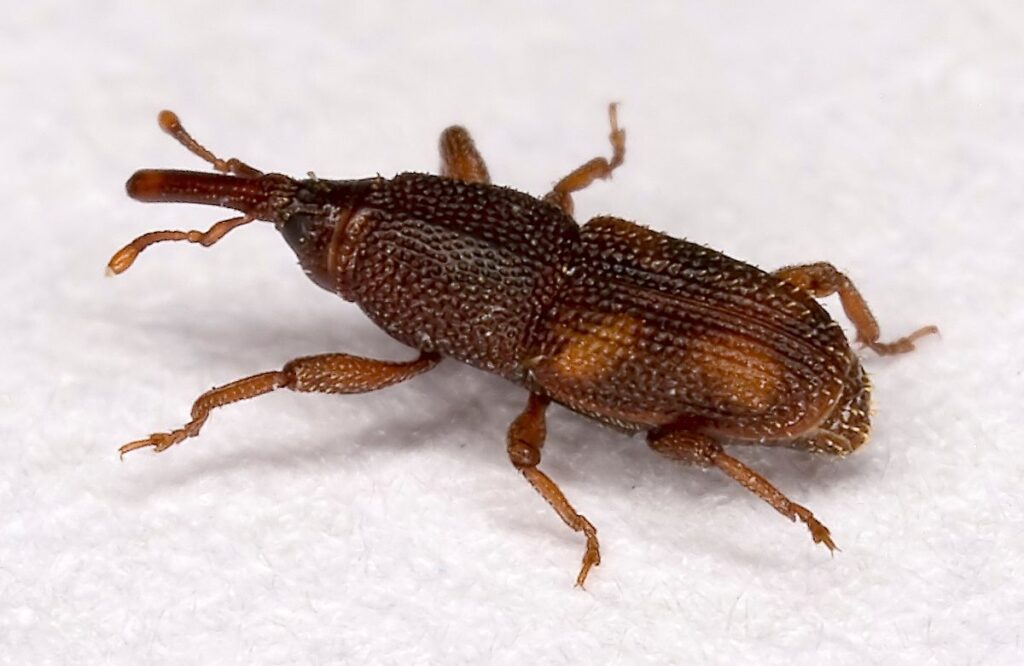
The Rice Weevil (Sitophilus oryzae) is probably one of the most common and well-known pests. Don’t be fooled by the name, these little critters will feed on all cereal grains. The larvae are incredibly hard to see and are white in colour. Adults on the other hand, grow to an average of 3- 4mm with a long ‘snout’. They are a dark brown in colour with four lighter spots on their back. The Weevils lifecycle is completed in only four weeks at 30⁰, slowing as the temperature drops and then at 15⁰ breeding will completely stop. All feeding is done within the grain itself, so they can be hard to see until about 3-4 weeks later when the adults will dig their way out of the hollow shell, leaving a small hole.
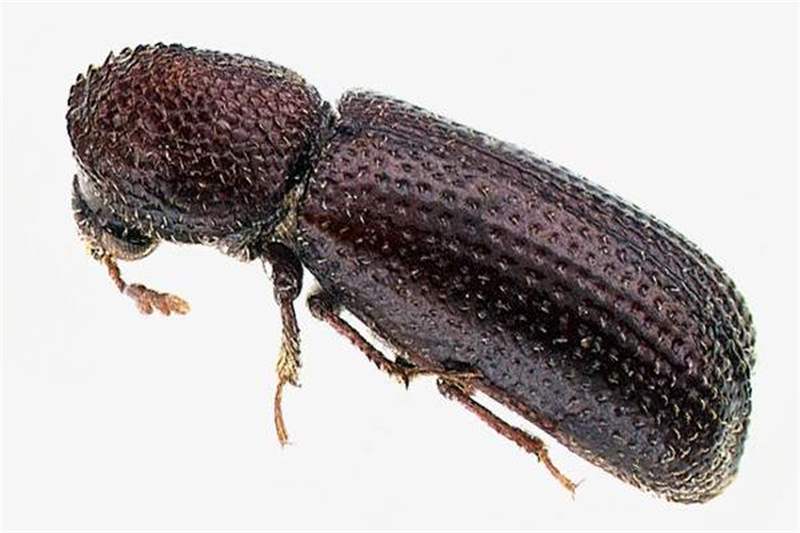
The Lesser Grain Borer (Rhyzopertha dominica) is black-brown in colour as an adult, measuring 2.5-3mm in length while the larvae are white with a brown head. The body has a slim cylindrical shape, with its head tucked under the neck shield. The average time between larvae to adult is 58 days, however, can change greatly depending on temperature. The Borers breeding ceases completely below 18⁰. Many people consider the Lesser Grain Borer to be one of the most destructive pests due to their chewing ability, leaving very little behind. Even the flour that builds up in infested grain can be food to the Borer if need be.
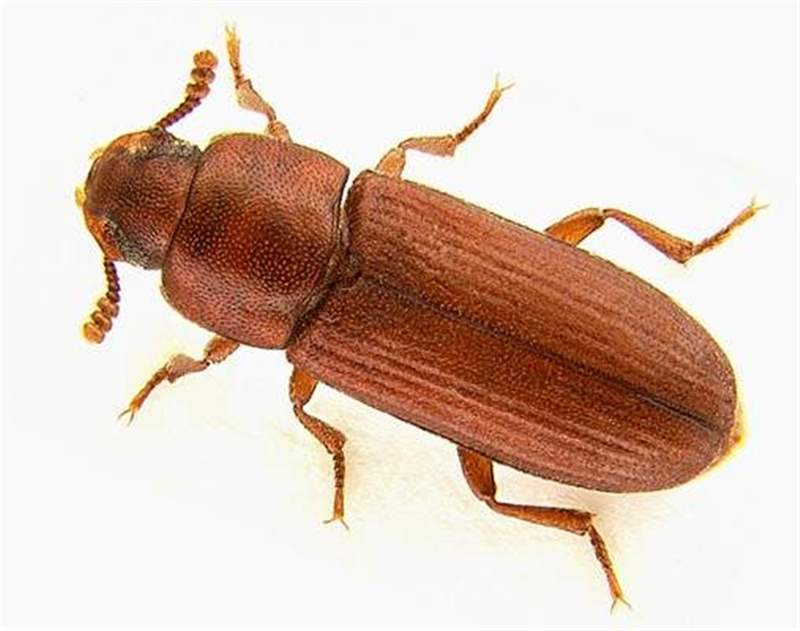
Differing from many of the other common cereal pests, The Rust-Red Flour Beetle (Tribolium castaneum) feed mostly on already damaged grains. As suggested by the name, they feed on the flour by-products of cereal grains that can be from milling or previous infestations. Adults beetles are a reddish-brown colour and grow up to 3-4.5mm long with slightly thicker ends to their antennae, which can set them apart from other types of pests. Adults can live from a whopping 200 days up to two years! However, at a temperature of 20⁰, reproduction will stop completely, making it one of the least cold-resistant insects in Australia.

Feeding not only on cereal grain but also oilseeds, processed products, peanuts and dried fruits; the Saw-Toothed Grain Beetle (Oryzaephilus surinamensis) certainly isn’t a fussy eater. They can be identified by their very dark brown colour and usually grow to around 3mm long. They are most noticeably characterised by their saw-toothed pattern on each side of the thorax. These beetles are very quick to move in comparison to other types of pests, and can even flying when its warm enough. Females can lay up to 400 eggs throughout your grain storage, with reproduction only stopping when temperature is below 17.5⁰ Celsius.
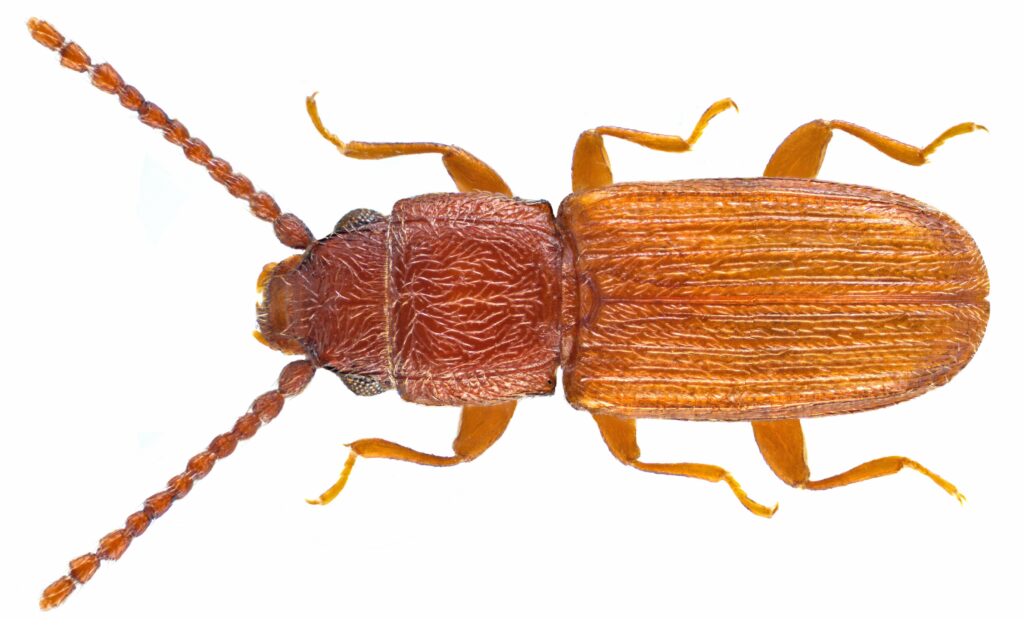
Flat Grain Beetles (Cryptolestes spp.) will infest most stored grain by feeding on already damaged grain. They are small, flat, around 2mm long and have long antennae. Flat Grain Beetles are very quick to move and can readily fly. Their larvae have a unique set of a tail and horns, feeding and developing externally on damaged grains. Females can lay up to 300 eggs loosely throughout your grain, with breeding coming to a halt when temperatures hit 17.5⁰ Celsius. A relative of the Flat Grain Beetle is the Rusty Grain Beetle, which has developed a high level of phosphine resistance and is of growing concern throughout Australia, so it is always worth thoroughly checking after fumigation that all pests are gone.
Australia is the only country worldwide that monitors and manages phosphine resistance. The studies revealed that the number of insect populations that are highly resistant to phosphine has increased for 5% in 2010 to 10% in 2015. While these numbers may seem low, that growth in resistance is of real concern. The Rust-Red Flour Beetle and the Lesser Grain Borer are some of the biggest threats, both showing a strong resistance to the fumigant. The rise in resistance is due to several reasons, one being inadequately sealed silos. For a fumigant to do its job, it must be held at a level appropriate for the volume of your silo, consistently for 7-10 days. Secondly, aerating your grain makes a huge different to ensure that all grain is exposed to the fumigant, rather than having pockets of grain that haven’t been touched. Failure to kill the insect at the first attempt, will increase resistance and create more work for yourself.
Fumigation is a great way to deal with infestations, however prevention is always the better route. Aeration cooling is one of the best and most efficient ways to prevent an insect problem. Did you notice how I pointed out the temperature at which every pest stops reproducing? Aeration cooling is all about bringing down the temperature of your grain. In turn, this will greatly slow down the life cycles of your pests, even potentially stopping the breeding all together. With the aim being to drop the temperature to between 20⁰ and 15⁰ Celsius, this can be achieved with quite small air-flow rates of around 2-4 litres of air per second.

So there you go. I hope reading about insects in your grain has helped shed some light on what could be living amongst your hard work. Until Next time,
Steve, The Silologist
Reference –
Resistance info- https://grdc.com.au/resources-and-publications/groundcover/ground-cover-supplements/ground-cover-issue-119-grain-storage/phosphine-resistance-one-in-ten
Insect specs and img- https://storedgrain.com.au/stored-grain-pests-id-w/

